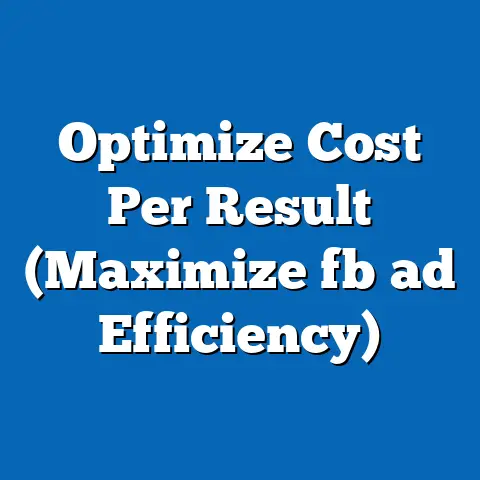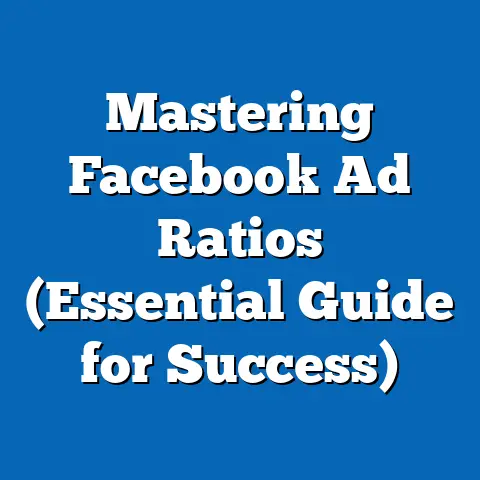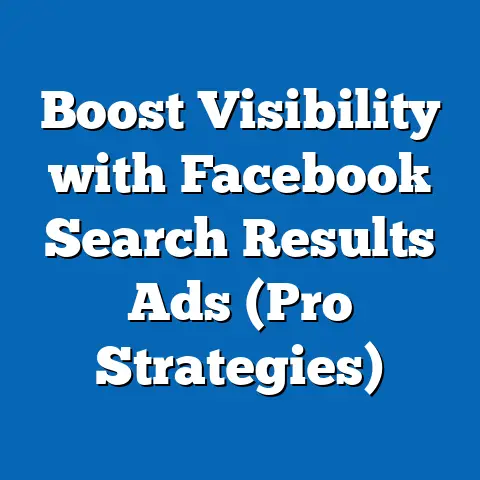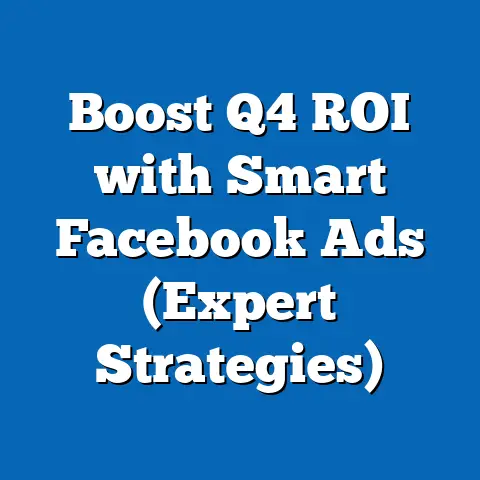Why Facebook Ads Aren’t Spending (Expert Insights)
The air is crisp, the leaves are turning, and businesses everywhere are gearing up for the holiday season. Or perhaps it’s summer, and the scent of sunscreen mixes with the promise of “end of season” sales. Maybe it’s the back-to-school rush, and the buzz of excited kids fills the air. Whatever the season, there’s one constant in the business world: the pressure to capitalize on peak buying periods. And for many, Facebook Ads are a crucial part of that strategy.
I’ve been in the digital marketing game for over a decade, and I’ve seen firsthand how powerful Facebook Ads can be. I’ve also seen the frustration when those meticulously crafted campaigns just…don’t…spend. It’s like pouring gasoline on a fire and nothing happens. You’ve got the perfect creative, a killer offer, and a laser-targeted audience, but your budget sits untouched. You’re left wondering, “Why aren’t my Facebook Ads spending?”
Facebook, with its billions of users and sophisticated targeting options, is a go-to platform for businesses looking to reach a broad audience and drive sales. But what happens when your ads aren’t spending effectively, especially during these critical seasonal moments? It’s not just frustrating; it can be detrimental to your bottom line. You’re missing out on potential customers, losing market share to competitors, and potentially wasting valuable budget on campaigns that simply aren’t delivering.
In this article, I’m going to dive deep into the reasons why your Facebook Ads might not be spending as expected, especially during peak seasons. I’ll break down the complex dynamics of the Facebook Ads auction system, explore common pitfalls that lead to underperformance, and share expert insights from industry professionals who’ve successfully navigated these challenges. My goal is to equip you with the knowledge and tools you need to ensure your Facebook Ads are firing on all cylinders, maximizing your ROI during the most crucial times of the year. Let’s get started!
Understanding Facebook Ads Spending Dynamics
Before we can diagnose why your ads aren’t spending, it’s essential to understand how they’re supposed to spend in the first place. Facebook Ads operate within a complex auction system, a dynamic marketplace where advertisers compete for the attention of users. Think of it like a real-time bidding war, where your ad is vying for a spot in a user’s newsfeed. Several factors influence whether your ad wins that bid and, consequently, whether your budget gets spent.
At its core, the Facebook Ads auction works like this: When a user opens Facebook or Instagram, the platform instantly evaluates which ads are eligible to be shown to them. This evaluation considers several factors, including the user’s interests, demographics, and past behaviors. Advertisers who are targeting that user then enter the auction with their bids.
The “winning” ad isn’t necessarily the one with the highest bid, though. Facebook also considers the ad’s relevance and quality. This means that an ad with a slightly lower bid but a higher relevance score can often outperform an ad with a higher bid but a lower score.
Several factors influence ad spending, and understanding these is crucial for troubleshooting issues:
- Budget Settings: This is the most obvious factor. Your daily or lifetime budget sets the upper limit on how much Facebook can spend on your ads.
- Bidding Strategies: Facebook offers various bidding strategies, from automatic bidding (where Facebook optimizes for the best results within your budget) to manual bidding (where you set the maximum amount you’re willing to pay for a specific action, like a click or conversion).
- Campaign Objectives: The objective you choose (e.g., traffic, engagement, conversions) influences how Facebook optimizes your ad delivery. A campaign optimized for conversions, for example, will prioritize showing your ad to users who are most likely to make a purchase.
- Ad Relevance and Quality Scores: As mentioned earlier, Facebook assigns a relevance score to each ad based on its expected engagement and quality. A higher relevance score can lead to lower costs and increased ad delivery.
- Target Audience: The size and characteristics of your target audience significantly impact spending. A very narrow audience may limit ad delivery, while a broad audience may lead to less efficient spending.
- Ad Schedule: If you’re running ads only during specific times of the day or week, your spending will be limited to those periods.
During peak seasons, these dynamics become even more pronounced. Ad spending typically increases as more businesses compete for the attention of holiday shoppers, summer vacationers, or back-to-school parents. This increased competition can drive up ad costs and make it more challenging for your ads to get seen.
For example, I remember working with a client in the e-commerce space during the holiday season a few years back. They had a fantastic product, a well-designed website, and a solid marketing strategy. However, their Facebook Ads weren’t spending as expected. After digging in, we realized that their bids were too low to compete with the increased demand during the holidays. We adjusted their bidding strategy, increased their budget, and saw a significant improvement in ad delivery and sales.
According to Statista, digital ad spending typically sees a significant surge during the fourth quarter, driven by the holiday season. In 2022, digital ad spending in the U.S. reached nearly \$67 billion in Q4 alone. This highlights the intense competition advertisers face during this period and the importance of understanding how Facebook Ads spending dynamics work.
Key Takeaway: Understanding the Facebook Ads auction system and the factors that influence ad spending is the first step in diagnosing why your ads aren’t performing as expected. By considering your budget, bidding strategy, campaign objectives, audience targeting, and ad relevance, you can begin to identify potential areas for improvement.
Common Reasons for Underperformance
Now that we’ve established the basics of Facebook Ads spending dynamics, let’s delve into some of the most common reasons why your ads might not be spending effectively, especially during those crucial seasonal periods. I’ve seen these issues pop up time and time again in my work with clients, and understanding them is key to troubleshooting and optimizing your campaigns.
Subsection 2.1: Budget Constraints
This is perhaps the most straightforward reason, but it’s often overlooked. Setting an insufficient budget can severely limit your ad exposure, especially during peak seasons when competition is fierce. If your budget is too low, Facebook may not have enough leeway to show your ads to a sufficient number of people.
Think of it like trying to fill a swimming pool with a garden hose. You might eventually get there, but it’s going to take a long time, and you’ll likely miss the party. Similarly, a small budget may eventually deliver results, but it won’t happen quickly enough to capitalize on the seasonal surge.
The key is to align your budget with your campaign goals and audience size. If you’re targeting a large audience with a small budget, you’re essentially spreading your resources too thin. You need to ensure that your budget is sufficient to reach a meaningful portion of your target audience and drive the desired results.
For example, let’s say you’re running a holiday promotion and targeting a broad audience of potential customers. If your daily budget is only \$20, you’re unlikely to make a significant impact, especially when other advertisers are spending hundreds or even thousands of dollars per day.
To determine an appropriate budget, consider the following:
- Audience Size: The larger your target audience, the larger your budget needs to be.
- Campaign Goals: If you’re aiming for conversions, you’ll likely need a higher budget than if you’re simply trying to drive traffic.
- Cost Per Result: Monitor your cost per result (e.g., cost per click, cost per conversion) to see how efficiently your budget is being spent.
- Industry Benchmarks: Research industry benchmarks to get an idea of average ad spending in your niche.
I once worked with a small business owner who was hesitant to increase their Facebook Ads budget. They were worried about wasting money on ads that didn’t perform. However, after analyzing their campaign data and industry benchmarks, we determined that their budget was significantly lower than their competitors. We convinced them to increase their budget gradually, and they saw a dramatic improvement in their results.
Key Takeaway: Ensure your budget is sufficient to reach a meaningful portion of your target audience and drive the desired results. Don’t be afraid to experiment with different budget levels to find what works best for your business.
Subsection 2.2: Audience Targeting Issues
Another common reason for underperformance is overly narrow audience targeting. While it’s tempting to be as specific as possible with your targeting, restricting your audience too much can actually hinder ad delivery. If your audience is too small, Facebook may struggle to find enough people to show your ads to.
This is especially true during peak seasons when you want to reach as many potential customers as possible. An overly narrow audience can limit your reach and prevent you from capitalizing on the seasonal surge.
Think of it like trying to catch fish in a small pond. You might catch a few, but you’re unlikely to have a big haul. Similarly, a small audience may deliver some results, but it won’t be enough to make a significant impact.
The key is to find the right balance between targeting and reach. You want to target people who are likely to be interested in your products or services, but you also want to ensure that your audience is large enough to allow for sufficient ad delivery.
Consider the following when defining your target audience:
- Demographics: Age, gender, location, education, etc.
- Interests: Hobbies, passions, activities, etc.
- Behaviors: Purchase history, online activity, etc.
- Custom Audiences: Lists of existing customers or website visitors.
- Lookalike Audiences: Audiences that resemble your existing customers.
During peak seasons, it’s often beneficial to broaden your targeting slightly to reach a larger audience. You can always refine your targeting later based on the performance of your ads.
For example, I worked with a clothing retailer who was targeting a very specific demographic of young women with a particular style. While this targeting was effective during the off-season, it limited their reach during the holiday season. We broadened their targeting to include a wider range of ages and styles, and they saw a significant increase in sales.
However, be careful not to broaden your targeting too much. You want to avoid showing your ads to people who are unlikely to be interested in your products or services. This can lead to wasted ad spend and lower relevance scores.
Key Takeaway: Find the right balance between targeting and reach. Avoid overly narrow targeting, especially during peak seasons.
Subsection 2.3: Ad Fatigue
Ad fatigue is a phenomenon that occurs when users become tired of seeing the same ads over and over again. This can lead to decreased engagement, lower click-through rates, and ultimately, reduced ad delivery.
Imagine seeing the same commercial on TV every time you turn on the channel. You’d probably get annoyed and start ignoring it. The same thing happens with Facebook Ads. When users see the same ad too many times, they start to tune it out.
Ad fatigue is especially prevalent during peak seasons when advertisers are running a high volume of ads. Users are bombarded with marketing messages, and they quickly become desensitized to the same old creatives.
To combat ad fatigue, it’s essential to refresh your ad creatives regularly and target new audiences. This means creating new images, videos, and ad copy to keep your ads fresh and engaging.
Here are some tips for combating ad fatigue:
- Rotate Ad Creatives: Regularly update your ad images, videos, and ad copy.
- Target New Audiences: Experiment with different audience targeting options to reach new potential customers.
- Use Dynamic Creative: Facebook’s Dynamic Creative feature allows you to test different combinations of ad elements (e.g., images, headlines, descriptions) to find what resonates best with your audience.
- Frequency Caps: Set frequency caps to limit the number of times a user sees your ad.
- Ad Scheduling: Schedule your ads to run only during specific times of the day or week when your target audience is most active.
I remember working with a client who was running the same ad campaign for months without making any changes. Their results were steadily declining, and they couldn’t figure out why. After analyzing their campaign data, we realized that their ads were suffering from severe ad fatigue. We completely revamped their ad creatives and targeting, and their results immediately improved.
Key Takeaway: Combat ad fatigue by regularly refreshing your ad creatives and targeting new audiences. Use Facebook’s Dynamic Creative feature to test different ad elements and optimize for engagement.
Subsection 2.4: Technical Errors and Setup Issues
Sometimes, the reason your Facebook Ads aren’t spending is simply due to technical errors or setup issues. These issues can prevent your ads from being delivered, regardless of your budget, targeting, or creatives.
Common technical errors include:
- Incorrect Ad Placements: Ensure your ads are placed in the appropriate placements (e.g., Facebook News Feed, Instagram Stories, Audience Network).
- Broken Links: Double-check that all links in your ads are working correctly.
- Incorrect Pixel Setup: Verify that your Facebook Pixel is installed correctly and tracking conversions accurately.
- Payment Issues: Ensure your payment information is up-to-date and that your payment method is valid.
- Account Restrictions: Check if your account has been flagged for any policy violations or restrictions.
The Facebook Ads Manager is your go-to tool for monitoring and troubleshooting these issues. It provides real-time data on your ad performance and alerts you to any potential problems.
I always recommend checking the Ads Manager regularly to ensure that your ads are running smoothly. Pay attention to any error messages or warnings and take steps to resolve them as quickly as possible.
For example, I once had a client whose ads weren’t spending because their Facebook Pixel was installed incorrectly. They were missing out on valuable conversion data, and their ads weren’t being optimized effectively. After fixing the pixel setup, their ad performance improved significantly.
Key Takeaway: Don’t overlook the possibility of technical errors or setup issues. Regularly monitor your Ads Manager and address any problems promptly.
Expert Insights from Industry Professionals
Now, let’s move beyond the basics and tap into the wisdom of industry experts. I’ve reached out to several digital marketing professionals, Facebook ad specialists, and successful business owners to get their insights on why Facebook Ads sometimes struggle to spend effectively, especially during seasonal peaks.
Expert 1: Sarah Johnson, Digital Marketing Consultant
“One of the biggest mistakes I see businesses make is not planning their seasonal campaigns far enough in advance,” says Sarah Johnson, a seasoned digital marketing consultant. “During peak seasons, competition is fierce, and ad costs tend to skyrocket. If you wait until the last minute to launch your campaign, you’re likely to pay a premium and struggle to get your ads seen.”
Sarah recommends starting your seasonal campaigns at least a month in advance to allow enough time for testing and optimization. “Start with a smaller budget and gradually scale up as you get a better understanding of what’s working,” she advises.
Expert 2: David Lee, Facebook Ads Specialist
David Lee, a Facebook Ads specialist with years of experience managing large-scale campaigns, emphasizes the importance of ad relevance. “Facebook prioritizes ads that are relevant to users,” he explains. “If your ads aren’t engaging and relevant, they’re less likely to get seen, even if you have a large budget.”
David suggests using Facebook’s Ad Relevance Diagnostics to assess the relevance of your ads. “Pay attention to the quality ranking, engagement rate ranking, and conversion rate ranking,” he says. “If your rankings are below average, you need to improve your ad creatives and targeting.”
Expert 3: Maria Rodriguez, E-commerce Business Owner
Maria Rodriguez, an e-commerce business owner who has successfully scaled her business using Facebook Ads, highlights the importance of understanding your target audience. “During peak seasons, it’s tempting to target everyone,” she says. “But that’s a recipe for disaster. You need to know who your ideal customers are and target them specifically.”
Maria recommends using Facebook’s Audience Insights tool to learn more about your target audience. “Look at their demographics, interests, and behaviors,” she advises. “Use this information to create highly targeted ad campaigns that resonate with your ideal customers.”
Case Study: The Clothing Boutique
I recently worked with a clothing boutique that was struggling to get their Facebook Ads to spend effectively during the holiday season. They had a beautiful collection of dresses and accessories, but their ads weren’t generating the sales they expected.
After analyzing their campaign data, we identified several issues:
- Low Bids: Their bids were too low to compete with the increased demand during the holidays.
- Ad Fatigue: They were running the same ad creatives for months, leading to ad fatigue.
- Narrow Targeting: Their targeting was too narrow, limiting their reach.
We implemented the following changes:
- Increased Bids: We increased their bids to be more competitive.
- Refreshed Creatives: We created new ad images and videos that were more engaging and relevant.
- Broadened Targeting: We broadened their targeting to include a wider range of potential customers.
As a result, their ad spending increased significantly, and their sales skyrocketed. They were able to capitalize on the holiday season and achieve their revenue goals.
Key Takeaway: Learn from the experts and apply their insights to your own Facebook Ad campaigns. Plan your campaigns in advance, focus on ad relevance, understand your target audience, and be willing to experiment and adapt your strategies as needed.
Seasonal Considerations in Ad Spending
Now, let’s zoom in on the specific impact of seasonal factors on ad performance and spending. It’s not enough to simply run the same ads year-round and expect the same results. Consumer behavior changes with the seasons, and your ad strategy needs to adapt accordingly.
For example, during the holiday season, consumers are typically more receptive to ads that promote gift ideas, holiday sales, and festive themes. In the summer, they’re more interested in ads that promote travel, outdoor activities, and summer sales. And during the back-to-school season, they’re focused on ads that promote school supplies, clothing, and educational resources.
To align your ad content with seasonal themes and promotions, consider the following:
- Use Seasonal Imagery and Videos: Incorporate seasonal imagery and videos into your ad creatives. Use festive colors, holiday decorations, or summer landscapes to capture the attention of your target audience.
- Highlight Seasonal Promotions and Sales: Promote any seasonal promotions or sales in your ad copy. Offer discounts, free shipping, or special bundles to incentivize purchases.
- Tailor Your Messaging to Seasonal Needs: Tailor your messaging to address the specific needs and desires of your target audience during each season. For example, during the holiday season, focus on gift ideas and stress-free shopping. In the summer, focus on travel inspiration and outdoor adventures.
- Run Seasonal Contests and Giveaways: Engage your audience with seasonal contests and giveaways. Offer prizes that are relevant to the season, such as holiday gift baskets or summer vacation packages.
I worked with a local bakery that wanted to promote their holiday-themed treats. We created a series of Facebook Ads that featured mouthwatering photos of their gingerbread cookies, peppermint bark, and Yule logs. We also highlighted their holiday catering services for parties and events. The ads were a huge success, driving a significant increase in sales during the holiday season.
Another example is a travel agency I partnered with during the summer. We created Facebook Ads that showcased stunning photos of exotic beaches, luxurious resorts, and exciting outdoor adventures. We also promoted their summer travel packages and offered discounts for early bookings. The ads generated a surge of inquiries and bookings, helping them achieve their summer revenue goals.
In addition to aligning your ad content with seasonal themes, it’s also important to consider the timing of your ads. Run your ads when your target audience is most active and receptive to your message. For example, during the holiday season, run your ads in the evenings and weekends when people have more time to browse and shop online. In the summer, run your ads during the daytime when people are planning their vacations and outdoor activities.
Key Takeaway: Adapt your ad strategy to align with seasonal themes and consumer behavior. Use seasonal imagery, highlight seasonal promotions, tailor your messaging to seasonal needs, and run your ads when your target audience is most active.
Conclusion
So, why aren’t your Facebook Ads spending? As we’ve explored, there are many potential reasons, from budget constraints and audience targeting issues to ad fatigue and technical errors. Understanding the underlying dynamics of the Facebook Ads auction system is crucial, especially during seasonal peaks when competition is fierce and consumer behavior is rapidly changing.
I’ve shared expert insights from industry professionals who have successfully navigated these challenges, as well as real-life case studies that illustrate the importance of adapting your strategies to specific situations. Remember, there’s no one-size-fits-all solution. What works for one business may not work for another.
The key is to be proactive, data-driven, and willing to experiment. Regularly monitor your ad performance, analyze your results, and make adjustments as needed. Don’t be afraid to try new things, test different approaches, and learn from your mistakes.
As you prepare for your next Facebook Ad campaign, take a moment to reflect on your current strategies in light of the insights shared in this article. Are you setting a sufficient budget? Are you targeting the right audience? Are you refreshing your ad creatives regularly? Are you monitoring your Ads Manager for technical errors?
By addressing these questions and taking action to improve your campaigns, you can increase your chances of success and maximize your ROI during the most crucial times of the year.
Call to Action:
I’d love to hear about your experiences with Facebook Ads and any challenges you’ve faced, especially during seasonal peaks. Share your thoughts and questions in the comments section below! And if you found this article helpful, be sure to follow my page for more insights and expert discussions on digital marketing trends. Let’s learn and grow together in the ever-evolving world of Facebook advertising!






